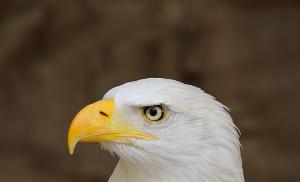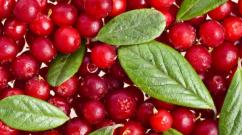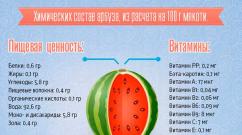Project mother and stepmother. Presentation of the project on the topic "Primroses of our region
Presentation of the text - descriptions 3rd grade Primary school teacher MOAU "NOSH No. 75" Orenburg Servatkina Tatyana Nikolaevna


By the river, in the meadow,
Barefoot in the snow
The first flowers -
Yellow eyes.
Coltsfoot


Etymology of the word
The name of the plant comes from the peculiarity of its leaves, light below and dark green above. If you touch its lower side, covered with hairs, soft, then a feeling of warmth, caress appears. this is the mother.
Upper same side of the sheet
smooth, hard, as if
cold:
this is the stepmother.

- Mother and stepmother are the first spring flowers.
- The golden flower heads look like dandelions. The stems of the plant are covered with reddish scales. The leaves are smooth and cold on the upper side, and soft and warm below.
- Mother and stepmother - a beautiful flower .

Scheme for constructing descriptive text common feature sign of parts assessment items

Plan 1h .Spring flowers 2h. Parts of a flower -head -stems -leaves 3h Beautiful flower

Find words with unstressed vowel in the root .
Spring, flowers, golden, heads,
cold.
Find the spelling paired consonants –
Heads, soft .
Words with consoles. Read it!
Covered, lovely.
Words for reference: similar, scales.
Orthographic Preparation

Key words spring (similar to dandelion) covered with scales smooth, cold soft, warm amazing

Words for reference similar, scales, below

Writing a summary Self-test Result, educational reflection


Slide 2
Why is it called that?
There is such a grass - coltsfoot. But few people know why it is called that. Apparently, the fact is that if you examine the leaf of this plant from the “front and back,” you can see that one side of the leaf feels warm, affectionate, and fluffy, like a mother. And the other, lower side, if you touch it, is cold, hard and slippery. This is the stepmother.
Slide 3
Coltsfoot (lat. Tussilágo) is a monotypic genus of perennial herbaceous plants of the Asteraceae family. The only species is the common coltsfoot (lat. Tussilágofárfara). It blooms in early spring, before the leaves bloom. Since ancient times it has been used as a medicinal plant.
Slide 4
Biological description The rhizome is long, branched, creeping. Two types of shoots develop from the buds on the rhizome: flowering and vegetative. In early spring, erect, low flowering shoots, covered with ovate-lanceolate, often brownish, scale-like leaves, begin to develop. On each of the shoots a single, drooping head develops before and after flowering, consisting of a cylindrical single-row spathe, a bare flat receptacle and bright yellow flowers of two types. Numerous outer (marginal) flowers are female, ligulate (the clearly expressed ligule of the marginal flowers is a diagnostic feature by which the coltsfoot differs from plants of the genus Butterbur, in which this ligule is not clearly expressed, the corollas are almost thread-like, and the number of marginal flowers is relatively small ), fertile. The flowers, which are located in the middle of the inflorescence, are bisexual, tubular, sterile. The fruit is a cylindrical achene, with a pappus (tuft) of soft hairs. After the fruits ripen, the flowering shoots die off. Some time after the start of flowering, vegetative shoots begin to develop, which bear several relatively large rounded-heart-shaped, slightly angular (angular-unevenly jagged), white-tomentose below, bare leaves with long petioles above.
Slide 5
Slide 6
It is usually found in areas free of turf - the banks of reservoirs, on the slopes of ravines and landslides, often in areas subject to anthropogenic impact - fields, wastelands, landfills. Prefers clay soils, but is also found on other types of soils, including sandy and pebble river shallows. The usual flowering time in the European part of Russia is in April.
Slide 7
Slide 8
Medicinal properties
Back in ancient Greece and Ancient Rome, coltsfoot was known as a medicinal herb with a fairly wide range of uses. Without going into tedious details of its chemical composition, we can highlight several of its main medicinal (pharmacological) properties: enveloping; antispasmodic; emollient; expectorant; anti-inflammatory; antiseptic. active substances have a complex effect on inflammatory processes. Coltsfoot is a traditional remedy for coughs, especially whooping cough, and also for mucous phlegm. Drinking tea from it can ease coughing and make viscous bronchial mucus more liquid. Used for chronic bronchitis, laryngitis, bronchopneumonia, bronchiectasis and bronchial asthma
Slide 9
View all slides
Slide 10 from the presentation “First spring flowers”
Dimensions: 720 x 540 pixels, format: jpg. To download a slide for free to use in class, right-click on the image and click “Save Image As...”. You can download the entire presentation “First spring flowers.pps” in a zip archive of 2582 KB in size.
Download presentationPlants and mushrooms
“Poisonous plants” - Hellebore lobela black hellebore. Deadly poisonous! Poisonous plants. Sagebrush. Medicinal poisonous plant. The entire plant is deadly poisonous! Potato. Snowdrop. Poisoning occurs when the bulb is mistaken for an onion. The water lily is white, the egg capsule is yellow. Lily of the valley Poison is contained even in a vase of water.
“Poisonous mushrooms” - Mushrooms. False honey fungus. Toadstool. Rogachik. Inedible. The fly agaric is smelly.
“Flowers and Plants” - Narcissus. Dahlias. Aster. Dahlias. Orchids. Gladuolus. Bindweed. Chamomile. Gladioli. Flowers. Water lilies. Petunia. Lily. Lily. Phloxes. Daisy. Bells. Carnation. Polka dots. Iris. Roses. Violets. Tulips. Lilies.
“Ornamental plants” - Azalea. Cactus flower. Lilies. Asters. Fuchsia. Decorative flowers. Orchids. Begonias. Daffodils. Pink hibiscus. Calla lilies. Gladiolus. Tuberous lily. Pelargonium. Chrysanthemums. Iris. Tulips. Hibiscus. Rose. Amaryllis. Dahlias. Peony. Snow-white lilies. Carnations. Gerberas. Camellias.
“Coniferous plants” - Spruce bark is eaten by spruce beetles and bark beetles. Woodpeckers love to pull bark beetles out of spruce trunks. Spruce provides great shade. Crossbills build nests on spruce trees and hatch chicks. Christmas trees for Christmas tree markets are specially grown in nurseries. Squirrels pull seeds out of spruce cones. Every 5-7 years the prickly needles fall off.
"Flower. Miraculous transformation” - The time will come, the seeds will fall into the ground and give life to new plants. In the sun the flower blooms. The bee's body is covered with flower pollen. Other fruits have seeds inside, like an apple. The sprout becomes bigger and bigger, stronger and stronger. A small seed fell to the ground. Fruits come with pulp, such as cherries, and there are fruits without pulp, for example, nuts.
There are a total of 32 presentations in the topic
Sometimes you are surprised how many interesting things we don’t know. We can’t remember the name of this or that flower, tree or shrub. We don’t know what plants are found in our village and how they can be used.
“Fairy tales can be told about every blade of grass, about every inconspicuous little buttercup or spikelet. And the life of even the simplest and most modest flower is often more interesting than the most magical fairy tales.” According to K. Paustovsky
View document contents
"Research work on the topic"
Research work on the topic:
“Primroses of our region.
Coltsfoot".
Supervisor: primary school teacher
Poluzhskaya secondary school Pinchukova E.F.
Performers: 1st grade students.
Goals:
Design a folding book “Early flowering plants. Coltsfoot".
Create a recipe book “Cough-grass”.
Create a poetic photo album “Yellow Light”.
Learn to work with an observation diary.
Introduce the results of your work to school students and parents.
Tasks:
- educational:
1. Introduce the variety of early flowering plants.
2. Form an idea of coltsfoot as a flowering plant (parts of the plant, method of seed dispersal, place of growth, etc.).
3. Observe all stages of plant development:
- blooming coltsfoot;
- fruit-bearing plant;
- a plant with leaves.
4. Study coltsfoot as a medicinal plant.
- educational:
1. Foster interest and respect for flowering plants.
2. Cultivate interest in research activities.
3. To cultivate attention to the poetic word and the ability to see beauty in the life around us.
- developing:
1. Develop the ability to observe and record your observations in a scientific diary.
2. Develop the ability to compare observed objects, independently look for cause-and-effect relationships, and draw conclusions.
3. Build group work skills and develop communication skills.
1 slide

2 slide
Why is it called that? There is such a grass - coltsfoot. But few people know why it is called that. Apparently, the fact is that if you examine the leaf of this plant from the “front and back,” you can see that one side of the leaf feels warm, affectionate, and fluffy, like a mother. And the other, lower side, if you touch it, is cold, hard and slippery. This is the stepmother.

3 slide
Coltsfoot (lat. Tussilágo) is a monotypic genus of perennial herbaceous plants of the Asteraceae family. The only species is the common coltsfoot (lat. Tussilágo fárfara). It blooms in early spring, before the leaves bloom. Since ancient times it has been used as a medicinal plant.

4 slide
Biological description The rhizome is long, branched, creeping. Two types of shoots develop from the buds on the rhizome: flowering and vegetative. In early spring, erect, low flowering shoots begin to develop, covered with ovate-lanceolate, often brownish, scale-like leaves. On each of the shoots a single, drooping head develops before and after flowering, consisting of a cylindrical single-row spathe, a bare flat receptacle and bright yellow flowers of two types. Numerous outer (marginal) flowers are female, ligulate (the clearly expressed ligule of the marginal flowers is a diagnostic feature by which the coltsfoot differs from plants of the genus Butterbur, in which this ligule is not clearly expressed, the corollas are almost thread-like, and the number of marginal flowers is relatively small ), fertile. The flowers that are in the middle of the inflorescence are bisexual, tubular, sterile. The fruit is a cylindrical achene with a pappus (tuft) of soft hairs. After the fruits ripen, the flowering shoots die off. Some time after the start of flowering, vegetative shoots begin to develop, which bear several relatively large rounded-heart-shaped, slightly angular (angular-unevenly-toothed), white-tomentose below, bare leaves with long petioles above.

5 slide

6 slide
It is usually found in areas free of turf - the banks of reservoirs, on the slopes of ravines and landslides, often in areas subject to anthropogenic impact - fields, wastelands, landfills. Prefers clay soils, but is also found on other types of soils, including sandy and pebble river shallows. The usual flowering time in the European part of Russia is in April.

7 slide

8 slide
Medicinal properties Even in ancient Greece and Ancient Rome, coltsfoot was known as a medicinal herb with a fairly wide range of uses. Without going into tedious details of its chemical composition, we can highlight several of its main medicinal (pharmacological) properties: enveloping; antispasmodic; emollient; expectorant; anti-inflammatory; antiseptic. active substances have a complex effect on inflammatory processes. Coltsfoot is a traditional remedy for coughs, especially whooping cough, and also for mucous phlegm. Drinking tea from it can ease coughing and make viscous bronchial mucus more liquid. Used for chronic bronchitis, laryngitis, bronchopneumonia, bronchiectasis and bronchial asthma













